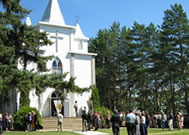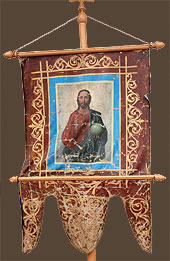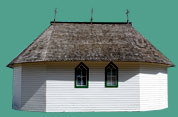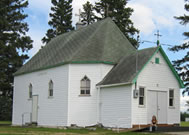St. Elijah Romanian Orthodox Pioneer Church
- Take a visit in photos

- Take a visit in photos...
- Take a visit in photos...
- Take a visit in photos...
- Take a visit in photos...
- Take a visit in photos...
- Take a visit in photos...
- Take a visit in photos...
- Take a visit in photos...
- Take a visit in photos...
- Take a visit in photos...
- Take a visit in photos...
- Take a visit in photos...
- Take a visit in photos...
- Take a visit in photos...
- Take a visit in photos...
- Take a visit in photos...
- Take a visit in photos...
- Take a visit in photos...
- Take a visit in photos...
- Take a visit in photos...
- Take a visit in photos...
- Take a visit in photos...
- Take a visit in photos...
- Take a visit in photos...
- Take a visit in photos...
- Take a visit in photos...
- Take a visit in photos...
- Take a visit in photos...
- Take a visit in photos...
- Take a visit in photos...
- Take a visit in photos...
- Take a visit in photos...
- Take a visit in photos...
- Take a visit in photos...
- Take a visit in photos...
- Take a visit in photos...
- Take a visit in photos...
- Take a visit in photos...
- Take a visit in photos...
- Take a visit in photos...
- Take a visit in photos...
- Take a visit in photos...
- Take a visit in photos...
- Take a visit in photos...
- Take a visit in photos...
- Take a visit in photos...
- Take a visit in photos...
- Take a visit in photos...
- Take a visit in photos...
- Take a visit in photos...
- Take a visit in photos...
- Take a visit in photos...
- Take a visit in photos...
- Take a visit in photos...
- Take a visit in photos...
- Take a visit in photos...
- Take a visit in photos...
- Tour photo link
Pioneer Church Anchored New Community
In 1900, when the first immigrant families arrived in the as-yet-unnamed frontier region near Asessippi, Manitoba, they found themselves without a place in which to worship and conduct religious services. For generations, back in their villages in Bucovina, they worshipped in old established Orthodox churches. Here in the wilderness, they were removed from their spiritual roots and they longed for a formal place for prayer and religious devotion.
It all started with a wooden cross
Featured Artifacts
- Take a visit in photos...
- Take a visit in photos...
- Take a visit in photos...
- Take a visit in photos...
- Take a visit in photos...
- Take a visit in photos...
- Take a visit in photos...
- Take a visit in photos...
- Take a visit in photos...
- Take a visit in photos...
- Take a visit in photos...
- Take a visit in photos...
- Take a visit in photos...
- Take a visit in photos...
- Take a visit in photos...
- Take a visit in photos...
- Take a visit in photos...
- Take a visit in photos...
- Take a visit in photos...
- Take a visit in photos...
- Take a visit in photos...
- Take a visit in photos...
- Take a visit in photos...
- Take a visit in photos...
- Take a visit in photos...
- Take a visit in photos...
- Tour photo link
This need for spiritual expression drove them to take drastic action. Early in 1901 they began by cutting down an aspen tree, forming it into a cross and erecting it in a clearing on the section of homesteads occupied by Eli Burla, Nicolai Pentelicuic, and brothers Ion and Gheorghe Paulencu. Because they had not yet located the land surveyors’ markers separating the quarters of land, they were not sure on whose homestead the cross was located.
Now they had a place in which to gather as a community to celebrate their religious roots. However, because most of them were illiterate and had not brought any formal church books with them from Bucovina, their religious celebration around the rugged outdoor cross was limited to readings from prayer books that someone had brought with them, and also singing the old familiar church hymns. The informal service was led by two literate immigrants, Gheorghe and Marina Paulencu. This primitive outdoor “church” served them during the warmer months of the year until 1903.
St. Elijah moves into a log shelter and becomes a parish
By then, more immigrants were arriving in the area from villages around the city of Cernautz, Bucovina. In that year, the settlers embarked on two major projects. One was to build a more permanent place of worship and the other was to form a parish and try to obtain a priest.
The first of these undertakings was achieved by erecting a small log building, plastered with a clay and grass mixture and covered with sod. Because it had only one small widow, the inside was dark, except when it was well lit up by candles during the improvised worship services. The newly established parish chose St. Elijah as its patron saint and named itself the Parish of St. Elijah. The name also honoured Eli Burla on whose land the church was erected. This was only the second Romanian Orthodox church to be established in Western Canada. It was consecrated on the feast of St. Elijah on August 2, 1903.
Early spiritual leaders
As more new settlers arrived in the area, some of them brought church relics from the old country, such as crosses, banners, icons and religious books. One of these new arrivals was Marcu Zelinskie, who was literate and could now lead the parishioners in a more elaborate form of worship. Because he was not ordained, he could not conduct the liturgy. However, he was able to perform the rites of baptism, marriage and funerals. Grigori Gabor became the first verger and others became cantors and readers.
Soon after, an extraordinary individual, Petru Hackman, arrived in the settlement from Aspacia, Bucovina. He was a former Justice of the Peace there and a literate man who spoke several languages. He soon became the spiritual leader at St. Elijah and conducted the religious services in the church. He too, was not ordained and could not conduct the liturgy, but could perform baptisms, marriages and funerals.*
Meanwhile, a campaign was mounted by parishioner Elie Elia, who wrote to the Metropolia of Moldova-Suceava in Romania, seeking an ordained priest for the new parish. But a new priest from Romania would not be acquired until 1907 when Fr. Ion Mihalovici arrived from Basarabia, Romania. He spoke both Romanian and Ukrainian and could minister in both languages. Fr. Mihalovici was housed in a newly erected austere log manse across from the primitive log church.
Carpathian-style Pioneer Church is built
New settlers continued to arrive and the small log church became inadequate for their needs. That winter, some parishioners traveled to nearby Mountain House, on the western edge of the Riding Mountain Forest Reserve (now Riding Mountain National Park), and sawed spruce logs into square timbers at the sawmill there. Now they were ready to begin construction on a new, more substantial church for the growing community. This became a reality in 1908 when a larger wooden church was constructed by volunteers, under the supervision of Alexie Slusarchuk, who had arrived in the community from Hlinitsa, Bucovina. Each member of the parish was asked to contribute $16 (a significant amount in those days) to pay for the additional materials such as wooden siding, cedar shingles, windows and doors.
The church designed by Slusarchuk was a replica of the small wooden churches common in the Carpathian Mountain region of Bucovina. It was distinguished by a fully covered roof with rounded ends. The walls were constructed from square-cut logs and covered with spruce siding. Inside, it featured embossed tin panels on the walls, a hand decorated ceiling and hand carved altar doors. The building was completed in time for the annual Feast of St. Elijah celebration on August 2, 1908, when it was consecrated by Fr. Ion Mihalovici.
This church served the combined Romanian-Ukrainian congregation until 1938 when the Ukrainian supporters built their own church nearby. Now it was strictly a Romanian Orthodox Church, and large enough to accommodate that segment of the local population. However, by the early 1950s it, too, was deemed to be inadequate and a new church was constructed in 1952. The old church had served the community for 44 years.
The forgotten Pioneer Church restored
When the new church was constructed, it was built on the same spot as the pioneer church. So, the old building was moved to one corner of the church property and abandoned. It remained there, gradually deteriorating until 1979. In that year, three local descendents of original pioneers, decided to restore the building and its interior and contents. They were Maria Gabor, Peter Gaber and Andrew Onofrechuk.
This ambitious undertaking involved moving the abandoned structure onto a foundation and completely restoring both the building and its contents. Fortunately, because of the high quality of workmanship and original materials, a limited amount of damage had occurred. This included the roof which was replaced with custom-milled cedar shingles and the exterior siding which was also custom-milled. The interior was restored by replacing the wooden floor and several sheets of embossed tin panels on the walls, plus many hours of washing and repainting the walls and ceiling in the original tones, which were specially blended.
Another stroke of good fortune occurred when it was discovered that many of the original contents and relics of the old church, such as carved wooden crosses, chandeliers, prayer stands, pulpit, and processional banners and lanterns were still restorable. The bell tower, which was earlier donated to another church was not recovered.
By 1980, the restoration was proceeding well and in 1983 the fully restored church was dedicated as a museum and received a provincial heritage designation. The project received financial support from Manitoba Culture, Heritage and Tourism. It is now visited by tourists, historians, photographers and descendents of the original pioneers from all over North America and elsewhere. Together with the Paulencu pioneer house, the pioneer cemetery and other smaller attractions, the site has become a popular tourist destination in the province.
Find out more: consult historic photos and print documents related to the Pioneer Church | take a visit in photos
Links: Saint Elijah the Prophet Lennard, Manitoba, an essay from Historical Anniversary Album 1929-1979, by The Romanian Orthodox Episcopate of America, Jackson, Michigan in 1979 describing the construction of the new church. | Manitoba Provincial Heritage Site No. 20 listing | Canada Historic Places Listing
Contribute: If you have any further information or historic documents related to the St. Elijah Pioneer Church we would be more than happy to find out more. Please go to our Contribute page or write us at .
*A more complete story of this remarkable man may be found in the book, Where Money Grew on Trees: A History of the Romanian Immigrants of Lennard Manitoba.
St. Elijah Church Photo Album

Click to see the St. Elijah Church gallery and add your own photos


